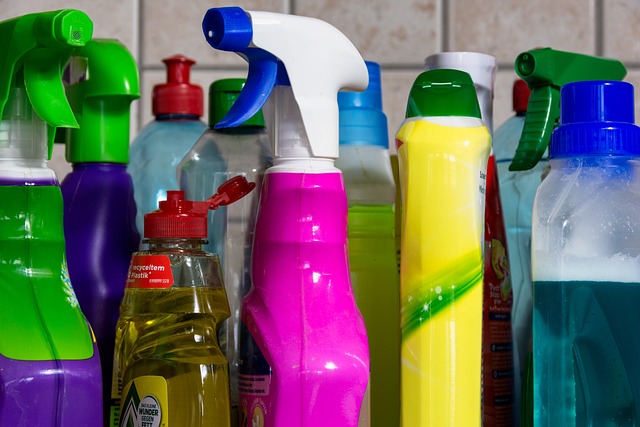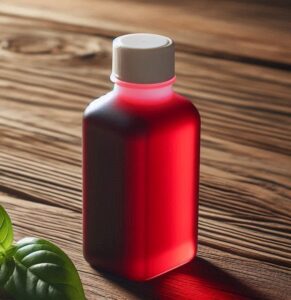Skin Allergies to Benzisothiazolinone and Methylisothiazolinone

Benzisothiazolinone and methylisothiazolinone are two chemicals you probably have never heard of but encounter on a daily basis. These chemicals are used broadly, in dish, laundry and hand soap, wet wipes, shampoo, cosmetics, paint, ink (including tattoo ink), sunscreen, polyvinyl gloves and other commercial products. They are added as a preservative since they have significant antimicrobial properties. Unfortunately, they are also well known to cause skin allergies and reactions. Putting them in dish soap, cosmetics, tattoo ink and shampoo, where an individual can have daily exposure, seems like a particularly bad idea.
Prevalence of Reactions
Methylisothiazolinone was elected the “allergen of the year” in 2013 by the American Contact Dermatitis Society. Due to increasing skin allergies and reactions, Europe has banned its use in cosmetics since 2017 (EC 2016). Before the ban was in place, standard patch testing in Belgium hospitals of skin allergy patients found that almost 8% of people tested had a skin reaction to the chemical (Herman 2021). In North America, testing of patients with skin allergies found 7.3% of individuals to react to benzisothiazolinone (DeKoven 2021).
Other research from Switzerland suggests that one in one-hundred individuals in the general population is likely to have skin sensitization and rashes due to the chemical (Garcia-Hidalgo 2018). Unfortunately, in some cases, concern over these products is just causing companies to replace them with chemicals that still cause problems. In Europe, due to bans on methylisothiazolinone, benzisothiazolinone is often used as a replacement and allergies to it are increasing as reactions to methylisothiazolinone are decreasing (King 2021).
Regretably, in the chemical industry, it’s extremely common that when a chemical gets flagged for health concerns, a similar chemical that hasn’t been studied is used as a replacement. This often turns into a game of whack-a-mole, as the research is constantly trying to sort out the concerns over the ever-changing chemical content of commercial and industrial products.
Tattoo Ink

While tattooing is increasingly popular, regulations over the chemicals used in tattoo ink are quite lax. A recent study found that a quarter of all tattoo ink contained benzisothiazolinone, which is known to sensitize skin after frequent exposure (Farnele 2022). Tattoo ink, which is permanently deposited within the skin, could easily cause skin allergies over time. And while tattoos can be “removed” by laser treatment, these chemicals will then be absorbed by the body with unknown consequences (Laux 2016).
Dish Soap
Soap products used to wash dishes, either by hand or in a dishwasher, may leave residue on eating surfaces. These residues can then come into contact with food which is consumed. Studies on hand washing dishes have found that residues of benzisothiazolinone can be found on washed items. Wood-based implements and other cooking and eating utensils with rough surfaces were shown to retain the largest quantities of the chemical (Kralj 2019).
Paint
A study in Europe on available paints found that 92% contained methylisothiazolinone and 88% contained benzisothiazolinone. Some countries were found to even have concerningly high levels in paint, including Denmark and Sweden (Thomsen 2018, Schwensen 2015). In rare but severe cases, painters and other individuals with allergies can have reactions from the off-gassing and air-borne transmission of these chemicals from freshly painted walls (Goodier 2017).
Effects on Thyroid Health
Beyond skin allergies, concerns have also been raised for the effects of these chemicals on hormonal systems throughout the body. Studies in fish and rat cells suggest that benzisothiazolinone decreases thyroid hormone production (Lee 2023). Thyroid hormones set the pace at which the body functions, with low levels causing low energy, constipation, dry skin, depression and other symptoms.
Undeclared Chemicals
For people that have already developed reactions to these chemicals, avoidance can be difficult. Studies on dish soap and personal care products has shown that these chemicals are often included and left off the ingredient list (Kimyon 2021). Obviously, this can make it much more difficult to find products that do not cause problems that are free of the chemicals.
Conclusion
Due to the ubiquity of both benzisothiazolinone and methylisothiazolinone, concerns for their use are warranted. The incidence of skin allergies has been increasing, with studies suggesting that 13% of children in the United States have allergic skin reactions, of which a significant percentage is likely due to these chemicals (Silverberg 2017). Finding safer preservatives that do not cause health problems is needed. It also is likely worth considering new legislation mandating that the safety of chemicals must be established before their use in commercial products that expose the general population. Hopefully, as more awareness and concerns are raised, changes can be implemented to better protect public health.



